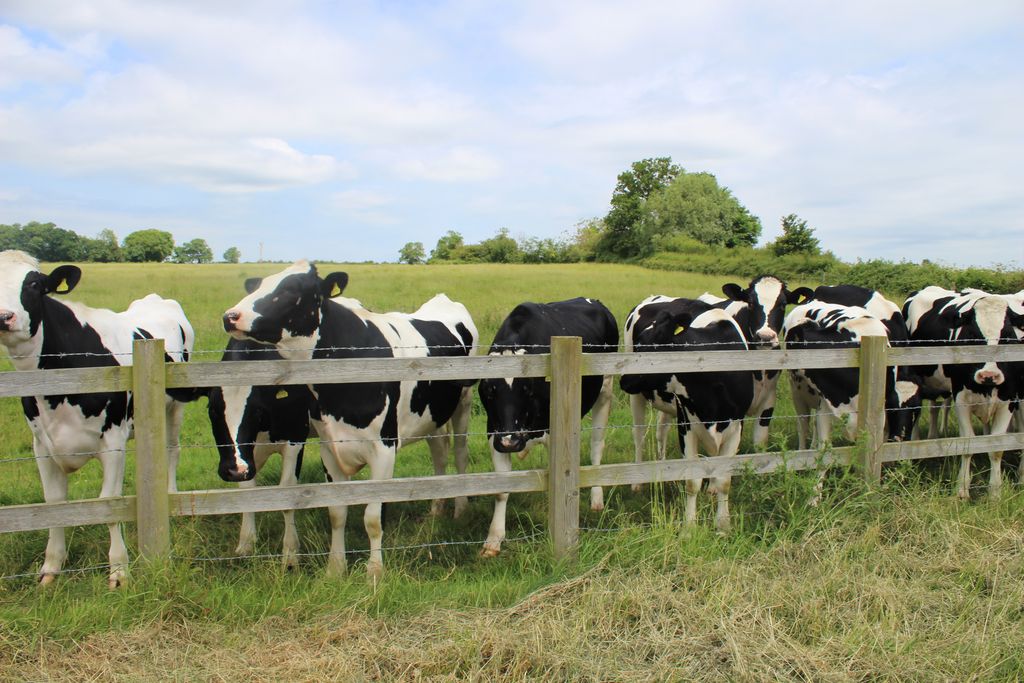Simplifying manure management – British Dairying
A large dairy and arable farm in Berwickshire has turned to a digital farming platform to help improve nutrient management and record keeping. British Dairying reports ...
Robert McDonald farms near Duns, and milks 900 cows, supplying more than 30,000 litres of milk each day to Muller on a Tesco contract. In addition, he has 730ha of mixed arable cropping and 180ha of grassland.
Robert was keen to have everything in one place when it came to nutrient and manure management to maximise use of his data.
So he started using Omnia in November 2023, and worked with Omnia Digital Farming Manager, Aidan Monaghan, to make improvements to nutrient management practices. These are helping drive efficiency while meeting regulatory requirements.
“A key driver for starting to use the software was to have everything in one place for manure and nutrient management and precision farming” says Aidan. “The farm has been doing variable nitrogen applications and soil scanning for variable seed rates for a number of years, so it was a natural succession to take this further and get more from the data.”
The system has made a difference to record keeping and nutrition planning, providing accurate, accessible records of dates, times, quantities, and the types of manure, slurry and fertilisers applied to individual fields. The dairy and youngstock units generate around 25,000m3 of slurry and over 3,500t of manure each year, stored in a 11,000m3 lagoon, plus two tanks of 3,500m3 and 5,500m3.
This is mostly applied to the arable area early in the season, via either an umbilical system or tankers with dribble bars, to reduce reliance on artificial fertilisers.
Overlaid map layers
The farm lies within a nitrate vulnerable zone (NVZ), so using any nutrients as efficiently as possible and having accurate records is essential. Using risk maps, farm and field limits, storage capacity and imports and exports, the software means Robert can generate manure maps for each field, overlaid with other map layers like soil type. This maximises the benefits from manure and slurry use, reduces environmental risk and minimises time spent on regulatory compliance.
Demonstrating environmental responsibility is coming under increasing scrutiny among milk buyers across the dairy sector. “There’s loads I have to do, including an annual soil diversity plan and an annual biodiversity plan, along with many other requirements,” says Robert.
In addition to easier record keeping, another benefit of the system is its ability to automatically calculate the nutrient breakdown of any organic materials applied, allowing subsequent fertiliser applications to be more accurately tailored to what has already been applied and crop requirements.
NDVI satellite imagery provides an additional layer of information to inform fertiliser planning decisions further.
And these refinements have already resulted in considerable fertiliser savings of up to 70kg N/ha in some fields, equivalent to around £70/ha. Over time, Robert has also noticed that crops have become more even, with improved yields.
“There is a cost to slurry application which still needs to be accounted for,” Robert notes. “Equally, there is also a large value of phosphate, potassium and other nutrients, as well as organic matter in slurry and farmyard manure, which is hugely beneficial.”
Aidan was able to easily import eight years’ worth of historical GPS grid sampling soil data and conductivity scans into the system, which the farm uses as the basis for variable seed rates and other agronomic decisions.
“It feels as though we are now managing crops and inputs much more efficiently,” says Robert. “Using organic forms of nitrogen
more effectively will become even more important moving forward, to help reduce costs and help manage our carbon footprint.”
Farm facts: S Hardy Ltd, Kelloe Mains Farm
- 910-ha dairy and arable farm, featuring 180ha of grass and 730ha arable
- 900 cows milked through a 72-cow rotary parlour
- Variable soils from heavier clay loam to gravelly loam. • Cropping includes winter and spring cereals, oilseed rape, spring beans, vining peas and potatoes.
- Nitrogen, phosphate, potassium and lime all variably applied, as well as using variable seed rates.
